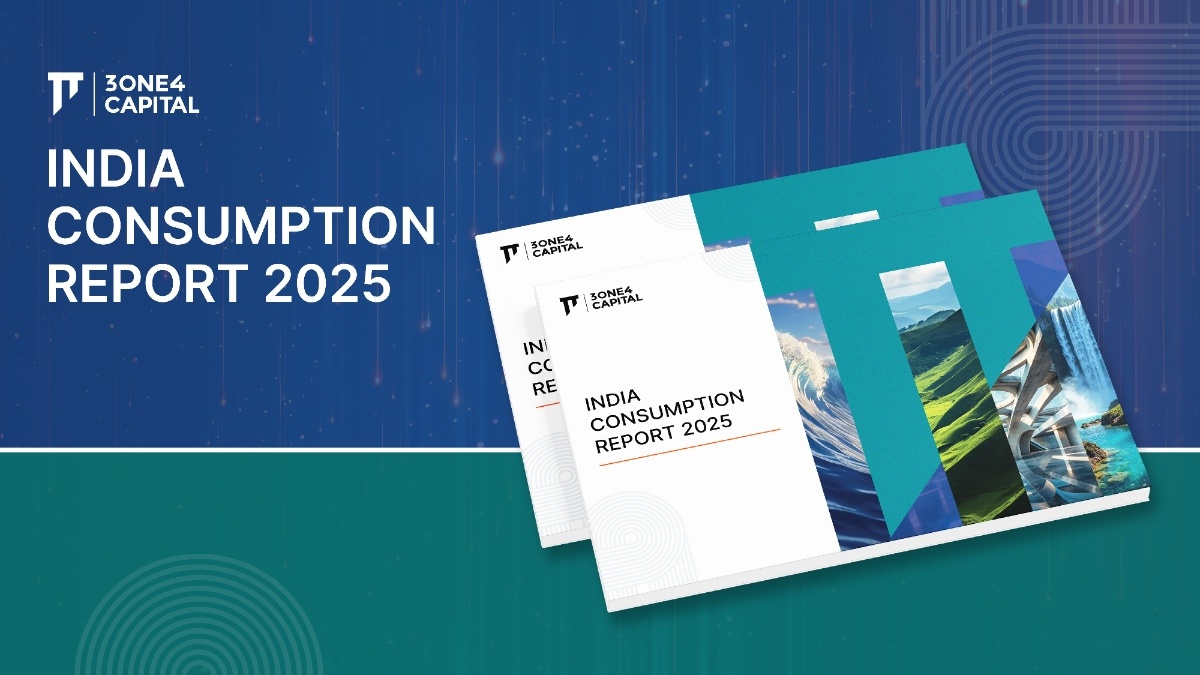
The Balancing Act: Managing Related Party Transactions
Related Party Transactions (RPTs) hold significant importance in the corporate landscape, as they can influence financial performance, create potential conflicts of interest, and impact shareholder value.
Given their potential implications, understanding and managing RPTs is essential for maintaining transparency and trust among stakeholders.
As companies navigate the complexities of RPTs, it is crucial to implement effective compliance mechanisms, foster transparency, and adopt best practices to mitigate risks associated with non-compliance.
This article explores the intricacies of RPTs in India, exploring the regulatory landscape, governance mechanisms, common challenges, and strategies for ensuring compliance and integrity in corporate transactions.
Regulatory Framework
RPTs are primarily governed by the Companies Act, 2013, the Securities and Exchange Board of India (SEBI) regulations, and certain accounting standards.
The Companies Act provides a comprehensive framework for identifying and managing RPTs, while the SEBI regulations impose additional disclosure requirements for listed companies.
Accounting standards, such as Ind AS 24, outline the financial reporting obligations related to RPTs, ensuring that companies provide adequate information to all relevant stakeholders.
1. Who is a related party?
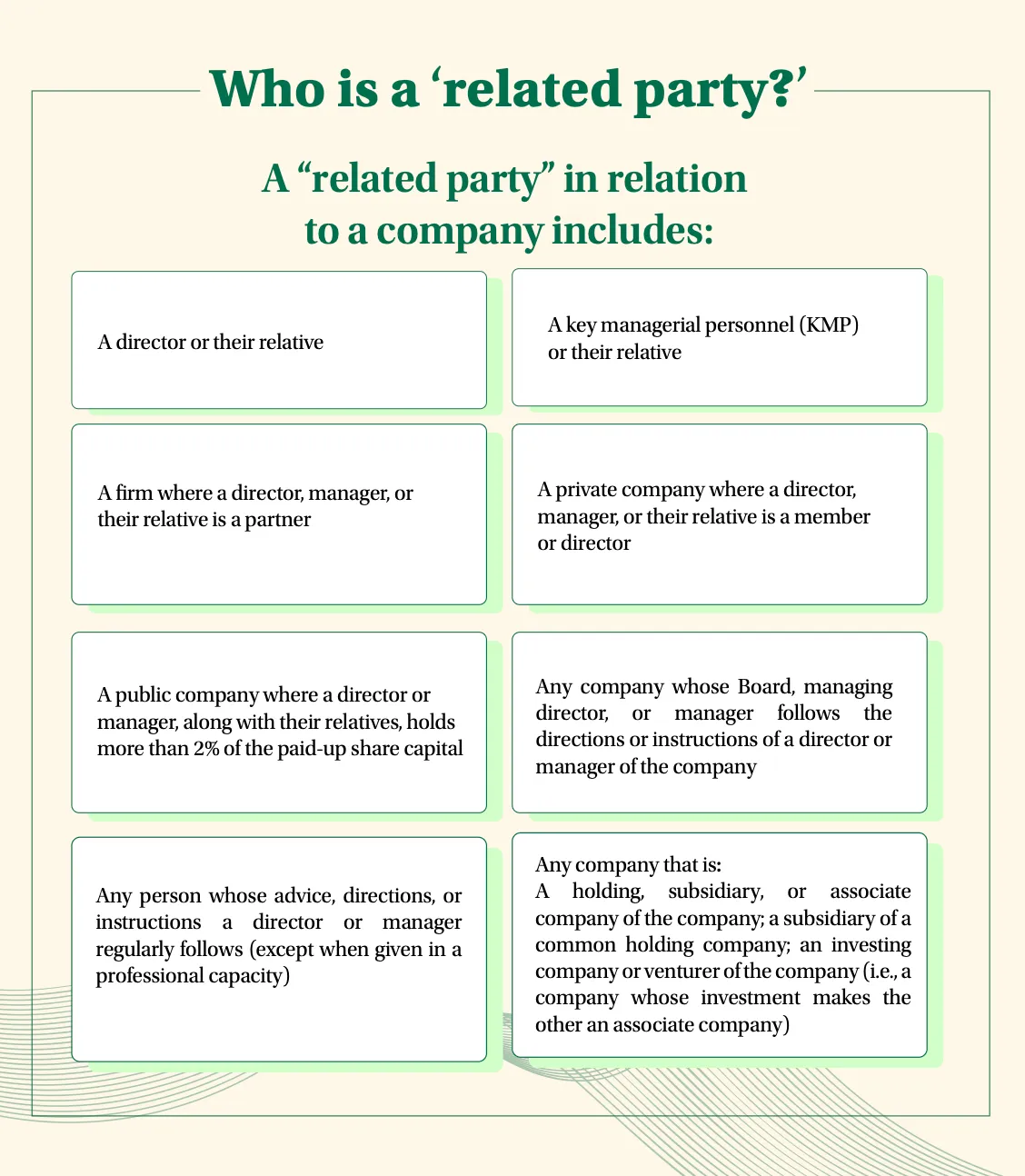
2. What’s a Related Party Transaction?
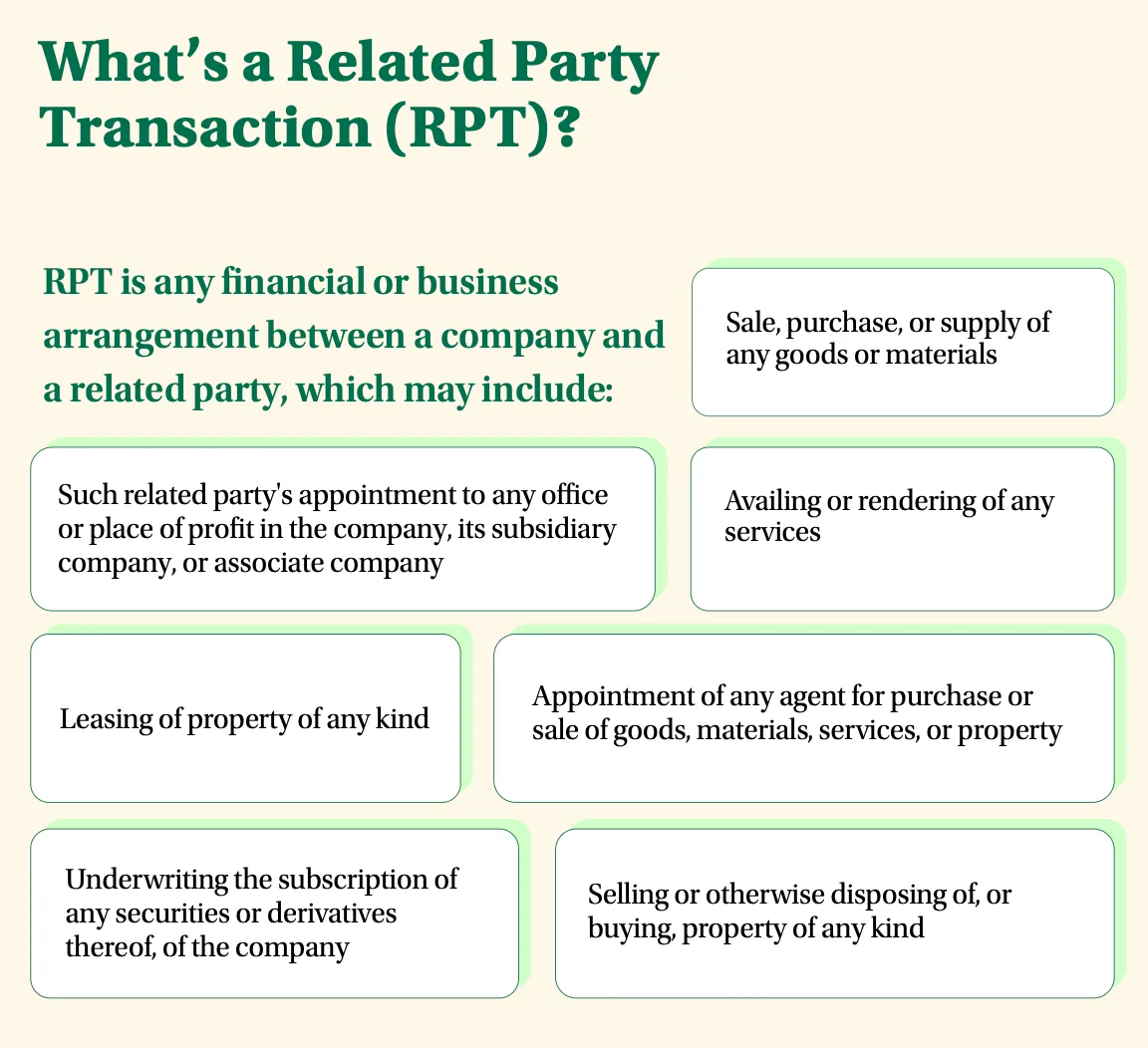
3. What are the regulatory compliance requirements and penalties?
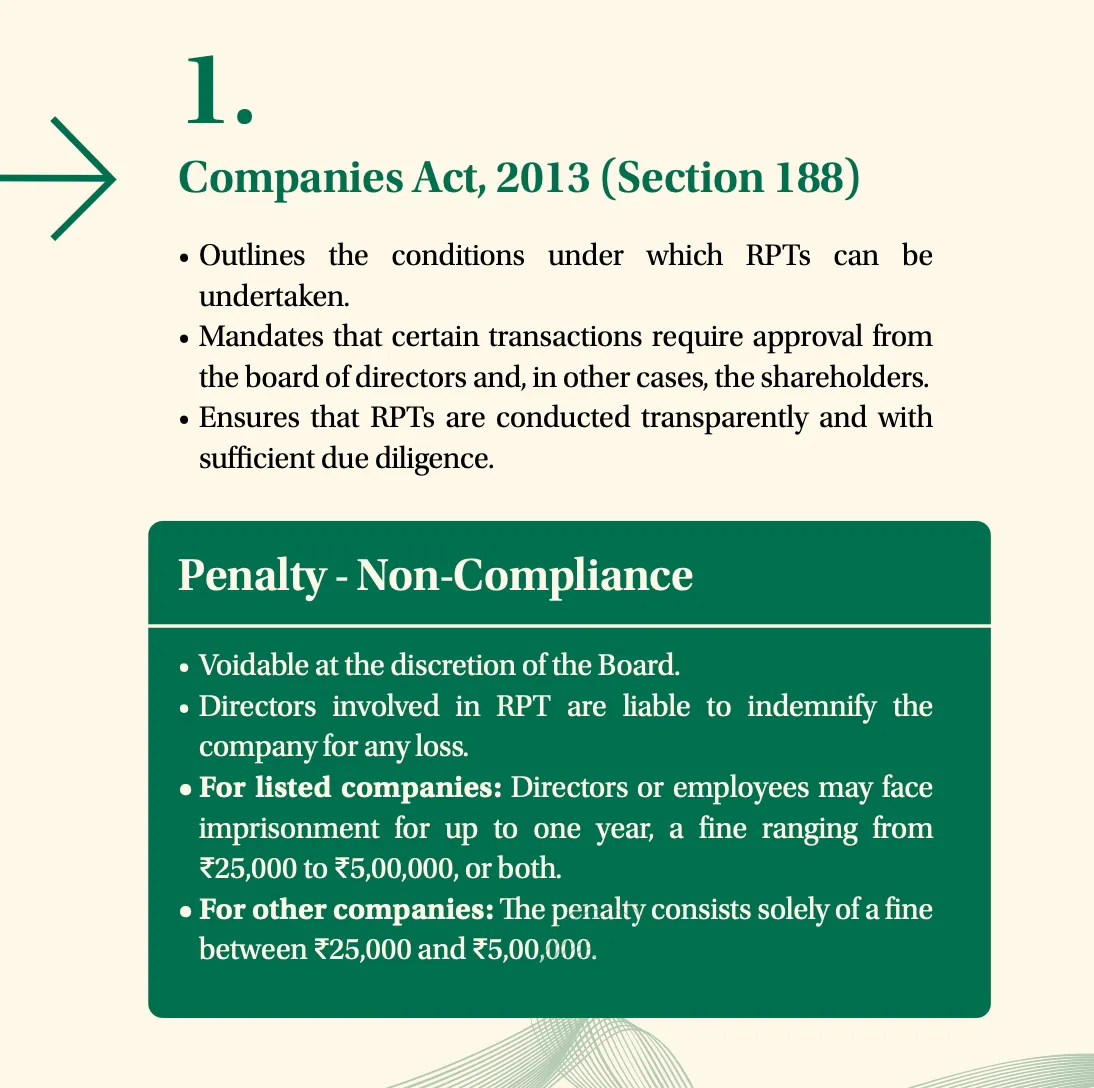
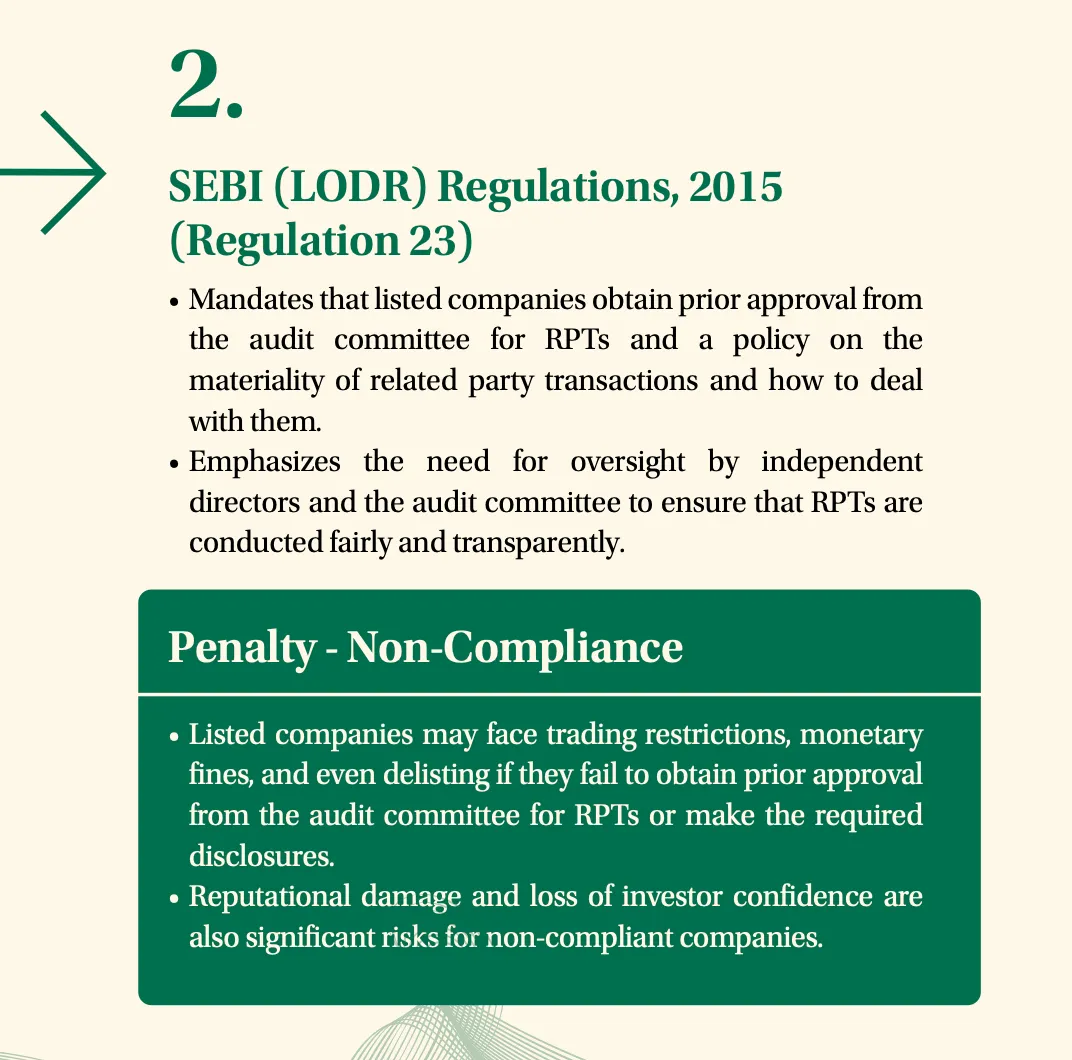
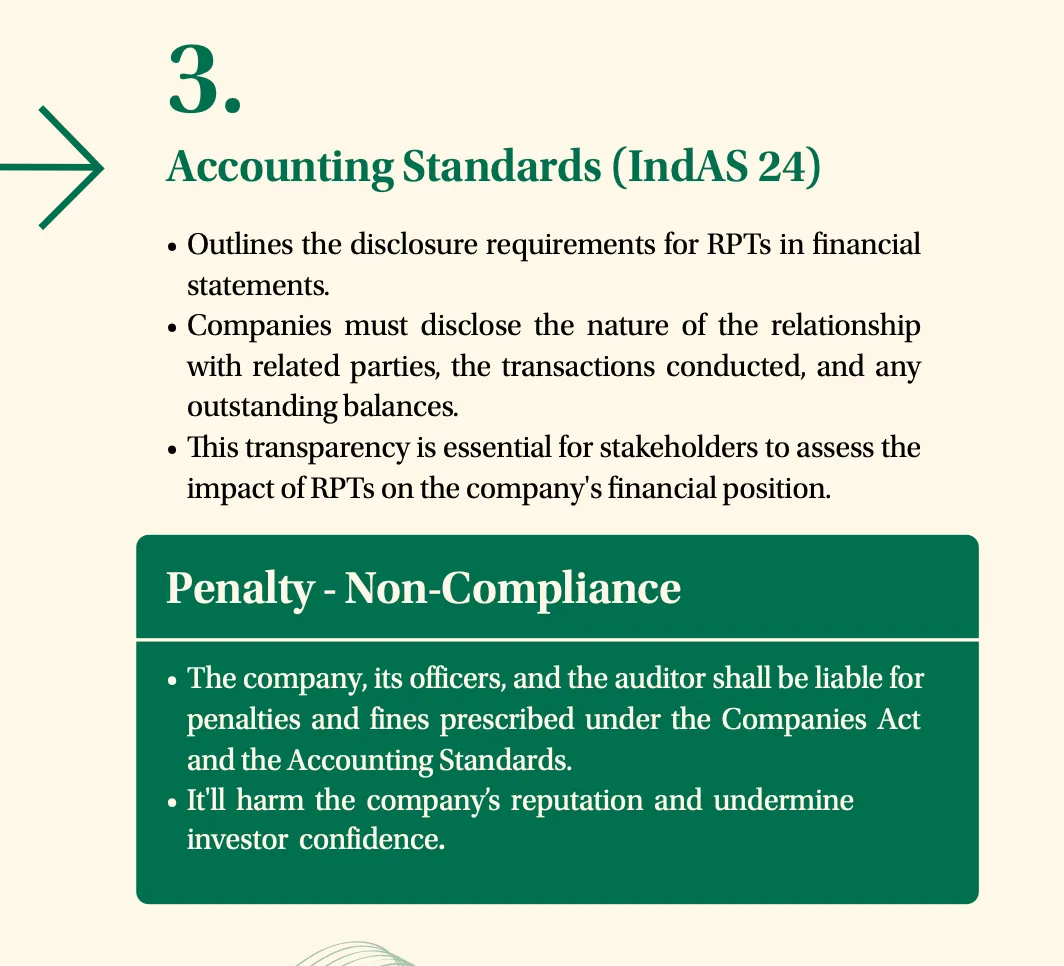
Transactions on an ‘Arm’s Length Basis’
An arm’s length transaction entails a transaction between two related parties that is conducted as if they were unrelated, especially in relation to pricing, so that there is no conflict of interest. The preferred practice is to ensure that any transactions between related parties is on an arm’s length basis to avoid the apparent risks of transactions that are not on arm’s length. Risks of RTP not on an Arm's Length Basis:
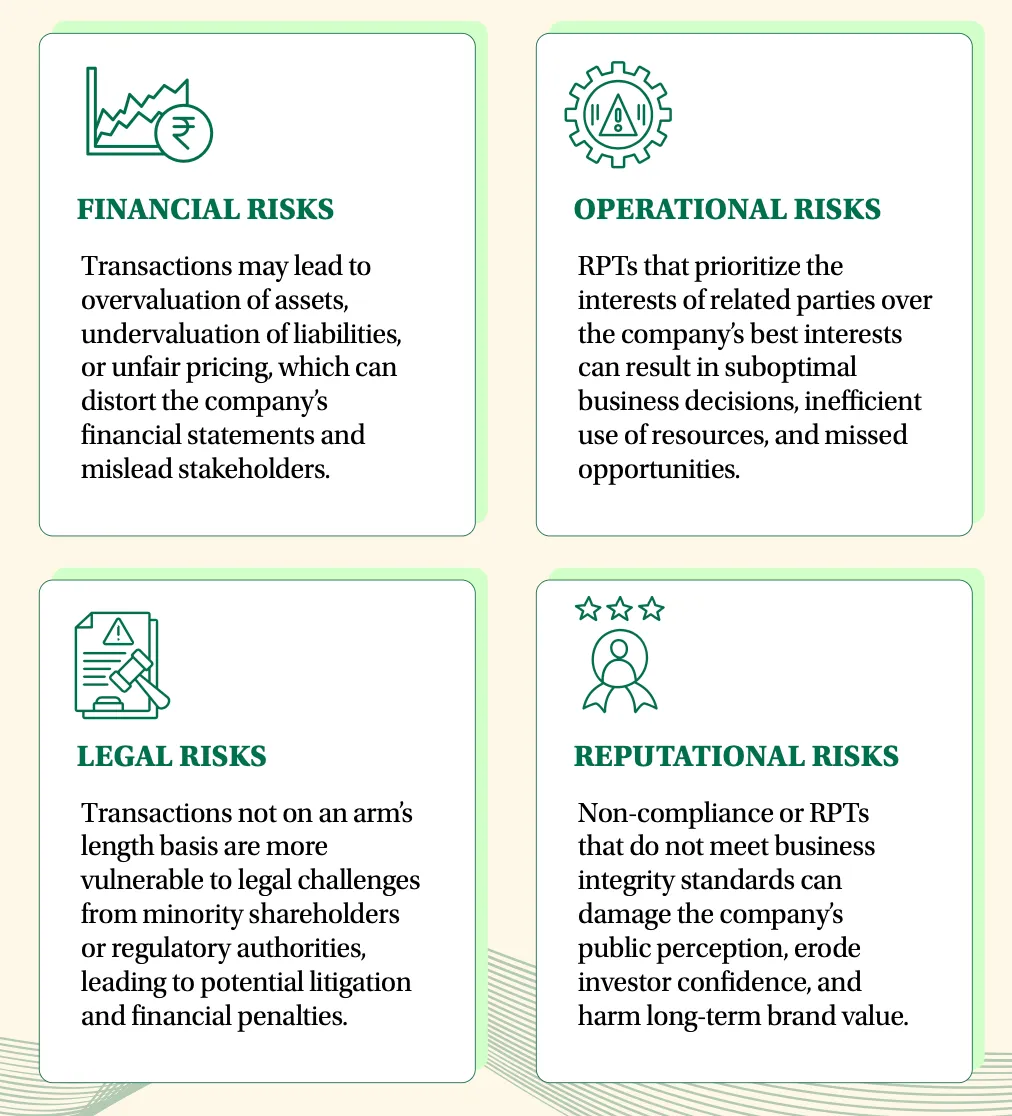
Challenges and Common Pitfalls of RTP
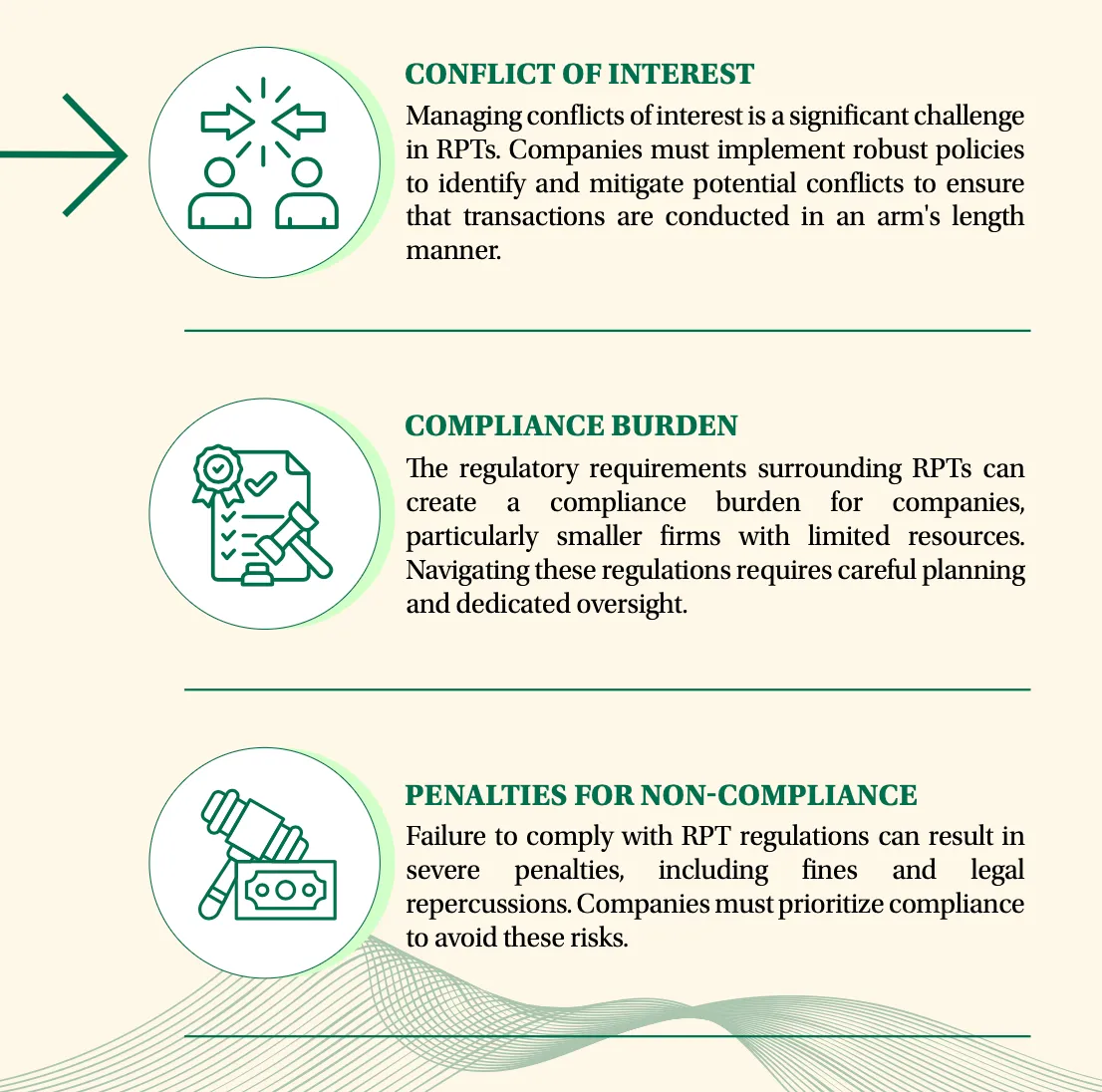
Mitigating Risks of Non-Compliance in Related Party Transactions (RPTs) To effectively mitigate the risks associated with non-compliance in RPTs, companies can adopt several strategies that enhance governance, ensure transparency, and promote adherence to regulatory requirements. Here are key approaches:

By adopting these strategies, companies can significantly mitigate the risks of non-compliance in RTPs. A proactive approach to governance, transparency, and oversight not only helps in adhering to regulatory requirements but also enhances the overall integrity and reputation of the organization. Conclusion The demonstrable need for risk mitigation in RPTs cannot be overstated. By fostering a culture of transparency and accountability, companies can navigate the complexities of related party transactions while safeguarding their interests and those of their stakeholders. As businesses continue to evolve in an increasingly interconnected world, adopting best practices in managing RPTs will be essential for sustaining growth and maintaining stakeholder confidence.

